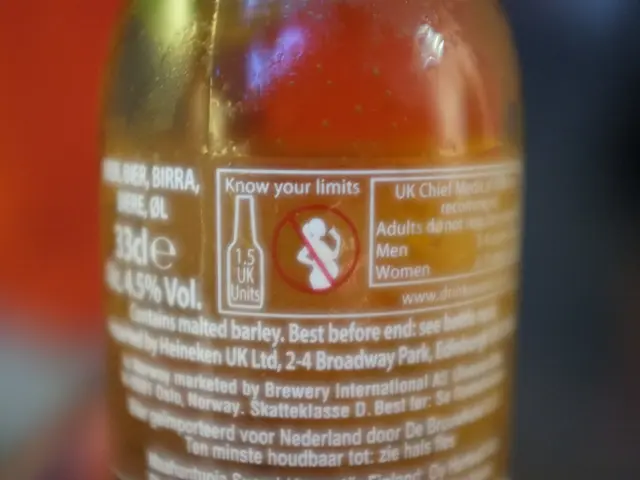The Dichotomy of AHA and BHA: Understanding Their Distinctions and Proper Application Strategies
In the realm of skincare, two acids have been making waves - Alpha Hydroxy Acids (AHAs) and Beta Hydroxy Acids (BHAs). These chemical exfoliants offer a powerful solution to various skin concerns, each with their unique properties.
AHAs, water-soluble acids, work on the skin's surface, removing dead cells and improving texture, radiance, and fading dark spots. They also boost collagen production, making them ideal for dry, dull, or uneven skin tones. Common AHAs include glycolic acid (the strongest), lactic acid (gentler), and citric acid (brightening).
On the other hand, BHAs, oil-soluble acids, penetrate deeper into pores, dissolving excess oil, clearing clogged pores, reducing blackheads, calming redness, and reducing breakouts. They are best suited for oily, acne-prone, or congested skin.
Best practices for using each acid include using AHAs to gently exfoliate surface skin, improve hydration, and reduce signs of aging or pigmentation. For BHAs, they are ideal for deeply cleansing pores and treating acne-prone skin, especially salicylic acid which reduces inflammation and breaks down blackheads.
Combining AHAs and BHAs in skincare routines or products provides dual-action exfoliation—AHAs improve texture and glow, while BHAs clear pores and calm inflammation. This combination can enhance efficacy while reducing irritation compared to using either alone.
To avoid over-exfoliation, use products with moderate or lower concentrations, introduce acids gradually, and allow skin recovery time. Maintain proper skin hydration and always apply sunscreen daily since AHAs and BHAs increase sun sensitivity.
Some hybrid exfoliants combine both acids to maximize benefits safely, addressing multiple concerns such as acne, pigmentation, texture, and aging simultaneously.
Remember, BHA, such as salicylic acid, is less aggressive and irritating and has additional antibacterial properties. The Food and Drug Administration (FDA) recommends testing products that contain BHA on a small area of the skin, following the instructions on the product label, avoiding exceeding the recommended applications, and practicing sun protection when using BHA-containing products.
When choosing the most appropriate product, consult a doctor or dermatologist who can help diagnose skin conditions and recommend the safest and most effective product. Glycolic acid and lactic acid are safe if the concentration of AHA is 10% or less, the product has a pH of above 3.5, and the product protects the skin from increased sun sensitivity or recommends daily sun protection.
While both AHAs and BHAs are exfoliants, they can be very irritating to the skin if combined. If you want to use both AHA and BHA products for different skin problems, consult a doctor. Both AHA and BHA repair sun-damaged skin, with AHAs reported to improve skin color changes like melasma, solar lentigines, and post-inflammatory hyperpigmentation.
However, using AHAs can lead to side effects like skin peeling, burning sensation, rash, swelling, changes in skin color, blisters or welts, itching, skin irritation, chemical burns, and increased risk of sunburn. Always follow the directions on the product's label and be aware of any warnings on the product label.
In summary, AHAs treat surface skin concerns like dryness and pigmentation, while BHAs penetrate pores to treat oiliness and acne. Optimal use involves choosing the acid based on skin type and condition, possibly combining both, and careful application to minimize irritation and protect the skin barrier.
- Alpha Hydroxy Acids (AHAs), such as glycolic acid, lactic acid, and citric acid, are water-soluble acids that work on the skin's surface, improving texture, radiance, and fading dark spots, while boosting collagen production, making them ideal for dry, dull, or uneven skin tones.
- On the other hand, Beta Hydroxy Acids (BHAs), like salicylic acid, are oil-soluble acids that penetrate deeper into pores, reducing blackheads, calming redness, and reducing breakouts, making them best suited for oily, acne-prone, or congested skin.
- Combining AHAs and BHAs in skincare routines or products provides dual-action exfoliation, as AHAs improve texture and glow, while BHAs clear pores and calm inflammation, enhancing efficacy and reducing irritation compared to using either alone.
- When choosing skincare products that contain acids, it's important to consult a doctor or dermatologist for recommendations, practice sun protection, and be aware of potential side effects, such as skin peeling, burning sensation, rash, or increased risk of sunburn.





